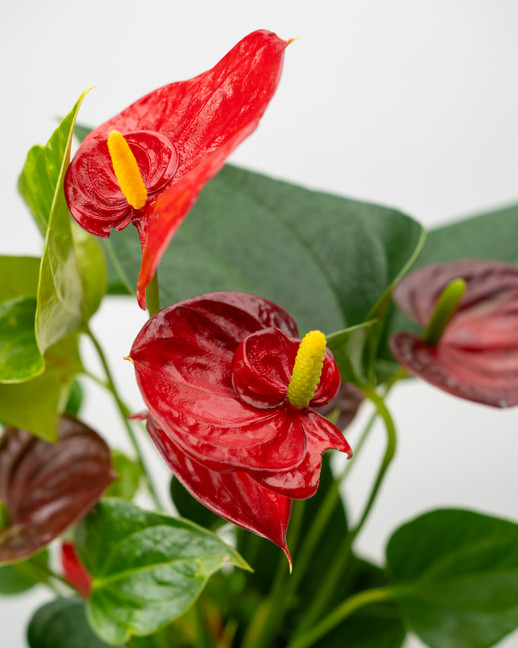Description
Anthurium andraeanum
Get ready to fall in love with the bold and fiery beauty of our red anthurium! With its vibrant heart-shaped blooms and glossy green foliage, this tropical stunner is sure to brighten up any space and steal your heart. Whether you're looking to add a pop of color to your home decor or send a heartfelt message of love, this gorgeous plant is the perfect choice. So go ahead and let the passion of the anthurium take hold - you won't regret it!
Plant Care
Watering:
Anthurium Red prefers moist but not waterlogged soil. Allow the top inch of soil to dry out before watering again. Overwatering can cause root rot and ultimately kill the plant. It's best to use a well-draining potting mix and a pot with drainage holes. Water the plant from the bottom by placing the pot in a tray of water, allowing the soil to absorb the moisture. Avoid getting water on the leaves, as it can lead to fungal diseases.
Light:
Anthurium Red thrives in bright, indirect light. Direct sunlight can scorch the leaves, while too little light can cause the plant to become leggy and weak. If your plant is receiving too much light, move it to a spot with slightly less light. Conversely, if your plant is not getting enough light, move it closer to a window or invest in a grow light.
Fertilizing:
Anthurium Red benefits from regular fertilization during the growing season. Use a balanced fertilizer every two to four weeks during the spring and summer. Reduce fertilization during the fall and winter when the plant is dormant. Avoid overfertilizing, as it can lead to salt buildup in the soil.
Repotting:
Anthurium Red typically only needs to be repotted every two to three years. When the plant has outgrown its current pot or the soil has become depleted, it's time to repot. Choose a pot that is one size larger than the current pot and use a well-draining potting mix. Gently loosen the roots and remove any dead or damaged roots before placing the plant in the new pot. Water thoroughly after repotting and avoid fertilizing for a few weeks to allow the plant to adjust to its new environment.



















